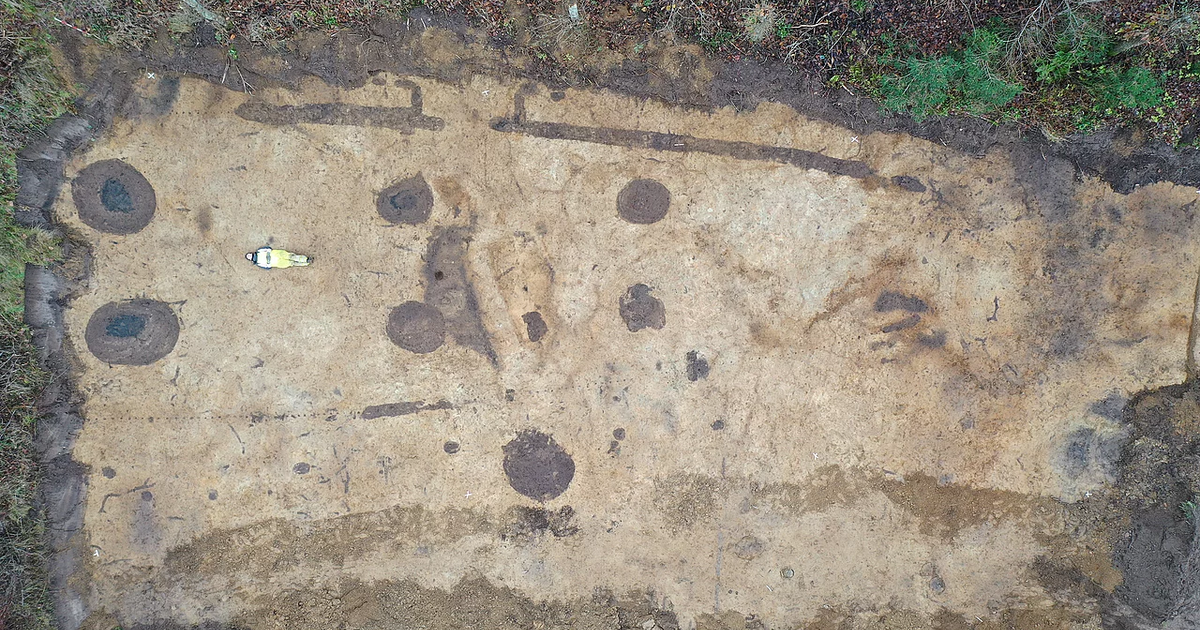It was a place of prestige and authority from which radiated the orders, the songs and the roasted effluvia of excessive banquets.
A large Viking-era hall has been excavated since the end of last year near the Danish village of Hune, north of the Jutland peninsula.
The considerable proportions of the building, 40 meters long for an estimated width of 10-12 meters, struck the archaeologists who unearthed the site.
“This is the greatest discovery of the Viking Age that we have identified for more than ten years”
, indicated in December in a press release Thomas Rune Knudsen, responsible for the archaeological operation entrusted to a team from the Museums of the North Jutland.
According to him, the hall was probably located near other buildings, even a hamlet,
“because it is rare for such a
structure to be isolated”
.
Read alsoThe mysteries of the Venus de Condate, discovered at the bottom of an ancient quarry in Rennes
This large Viking residence was a kind of mansion that served as a place of prestige, power and warrior sociability.
If this model of privileged habitat is documented before the beginning of the Viking era itself, traditionally located at the end of the 8th century, their volume develops over time.
According to the Danish researchers, the structure studied at Hune thus resembles halls excavated at Fyrkat and Aggersborg, two Scandinavian fortresses built in the 10th century, during the reign of King Harald with the blue tooth, towards the end of the Viking era.
The lord of the hall
Better still, archaeologists think they know the precise name of the owner of this great hall.
Their hypothesis originates not far from the site, in the church of Hune.
A rune stone, erected more than a millennium ago, stands there cramped, enclosed for centuries in a corner of the building in which it was moved.
The inscription engraved in the dark rock quotes a certain Runulv den Rådsnilde, to whom his three sons dedicated the monument.
The runestone now kept inside the church in Hune, Denmark.
Dated from the years 970-1020, it mentions a possible local Scandinavian potentate who could have been the lord of the hall excavated since the end of last year, on the land of the municipality.
Nordjyske Museum
However, the rune stone is dated to the years 970-1020.
Even though the Scandinavian monument has been moved since its erection, archaeologists in Jutland believe that it must have come from the surrounding area nonetheless.
This would thus make Runulv den Rådsnilde a possible local lord of the 10th century and, by extension, one of the possible owners of the great hall of Hune.
The track, attractive, nevertheless remains
"difficult to prove"
, concedes archaeologist Thomas Rune Knudsen.
The multiplication of large Viking halls from the 10th century proceeds, in Denmark, from the progressive affirmation of a centralized royal power under the reign of Harald with the blue tooth.
The king converted to Christianity in 960 and undertook intense work to fortify his kingdom.
His son Sven with the Forked Beard succeeded him in 986 and became the first Scandinavian ruler to mint coins.
Carbon 14 examinations should enable Danish archaeologists to date the Hune site with more precision before the end of the year.













